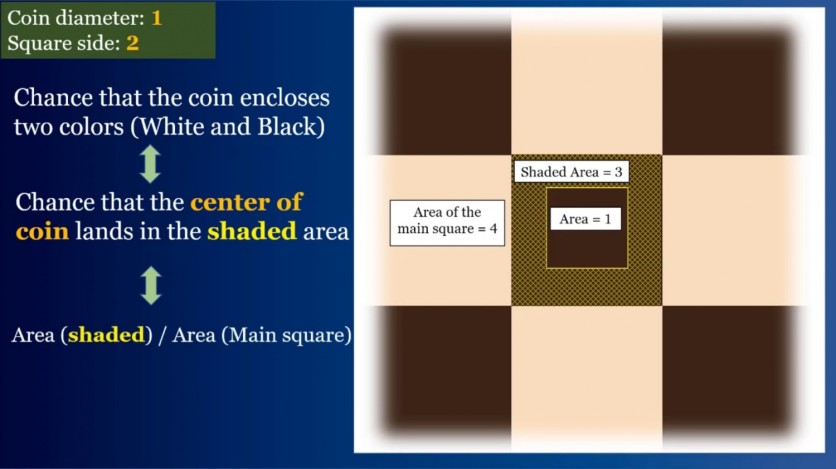For tech giants, aspiring employees should first deal with the unique way of an interview that is different from the usual. Besides a series of endless talks about one's achievements, ideals, and plans for the company, Amazon has proposed a problem-solving test to find out if a person is worthy to enter the prestigious firm.
Recently, a popular puzzle solver on YouTube, Mohammed Ammar or also known as LOGICALLY YOURS, has posted an example of Amazon's probability puzzle which involves a large chessboard.
Amazon's Interview Question: The Chessboard Puzzle

In a report by Yahoo, the probability question starts with a one-diameter coin which is tossed in a huge chessboard. The measurement of every square in the board is 2 diameters. Now for the problem, it is asking the user of the chances that a coin will touch the squares which have white and black colors.
Diving deeper, the coin should land on both squares that contain different colors. If the coin does not cross either black or white sides, it will touch only a single color. On the other hand, if the coin does not cross the side but only touches it, only one color is covered.
According to the video explained by Ammar, the puzzle will depend on the center of the coin when it will cross a single side or not. Moreover, the user could have a grasp of the coin's boundary limit in its center through an inner square. This can be done by looking at the coin's center when it moves and through the coin's movements around the sides of the square.
This tackles that the coin will only land on either one of the two colors - a representation of the coin's maximum limit. Just imagine that if the center of the coin touches the inside of the inner square, it will only count as one color. Meanwhile, if the coin settles down outside the square, it will hit the two colors by crossing one side of the square or even more than that.
By subtracting the main square's area from the area of the inner square, we can get the area of the outside section. Now for the calculation of the inner square's area, you should get the difference by subtracting 0.5, the radius of the circle from two times the length of the main square, hence, 2-1.
After that, square the difference and this will lead you to the inner square's area of 1. On the other hand, the area of the main square will be 4. Meanwhile, the area of the remaining squares is 3 which was acquired through subtracting 4, the main square's area from the area of the inner square, which is 1.
Read Also: Amazon Logo Changes Over Uncanny Resemblance to Hitler's Toothbrush Mustache: See Logo Evolution
Therefore, the answer to Amazon's chessboard probability puzzle will be 75 percent or 3/4 in its fraction form. This is the chance that the coin will touch the outside of the inner square. This is done by dividing the outside area by the area of the entire square.
How the Community Reacts to Amazon's Coin on a Chessboard Puzzle?
In the YouTube section of LOGICALLY YOURS, some players reacted to Amazon's tricky puzzle, which has a difficulty level of 2 out of 5. One user said that the problem is difficult, but the solution is simple.
While the answer is 3/4, one commenter proposed a different solution to the problem. Through considering the positions of the coin, represented by x and y, there is an increment in the cycle of length denoted as 1+1 regardless if the coin lands vertically or horizontally over or between the lines.
The user further claimed that the answer remains as 3/4 through subtracting 1 from 1/4, which is the probability of the coin to land between the lines in both directions.
However, one YouTube user said otherwise. According to him, the probability is 0% since neither black nor white is a color, but the latter is a shade. Furthermore, the coin standing on the edge will not tell about the problem's true probability. Later, he pointed out that the rules were not set properly and the answer was wrong.
Read also: [VIDEO] Amazon's Alexa vs. Google Assistant Chess Match: Who Won, and Some Pointers to Consider
This article is owned by Tech Times
Written by Joen Coronel
ⓒ 2025 TECHTIMES.com All rights reserved. Do not reproduce without permission.




